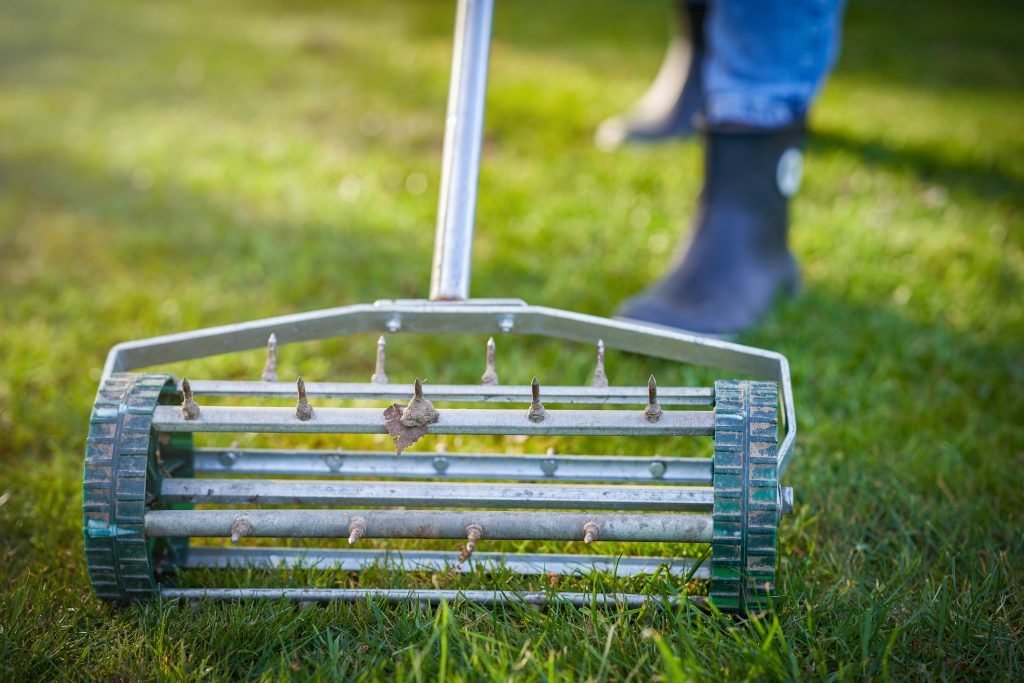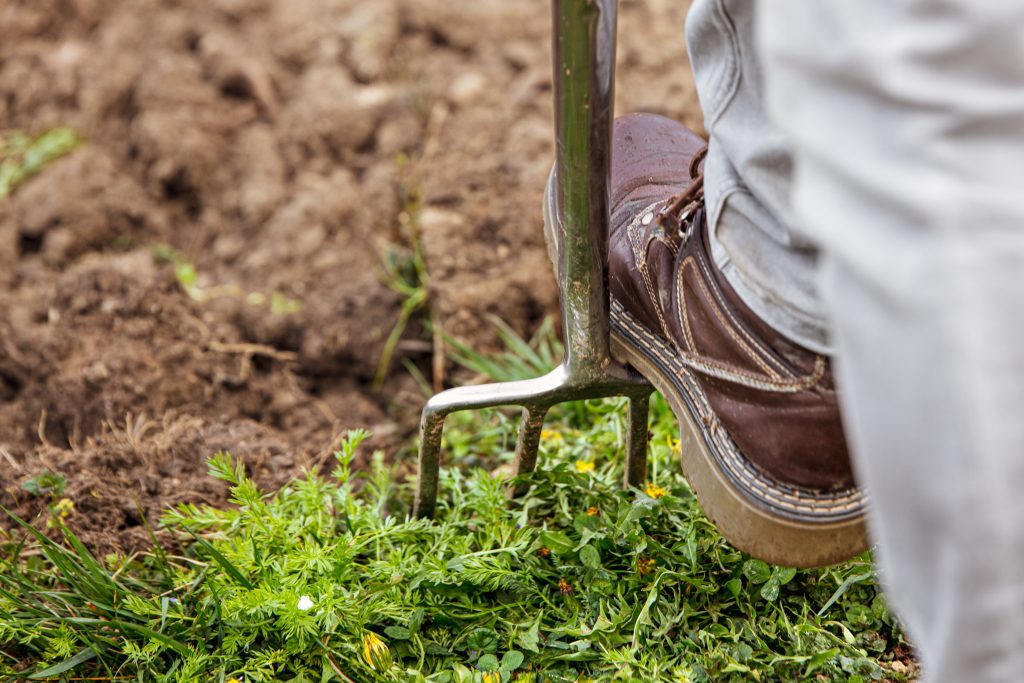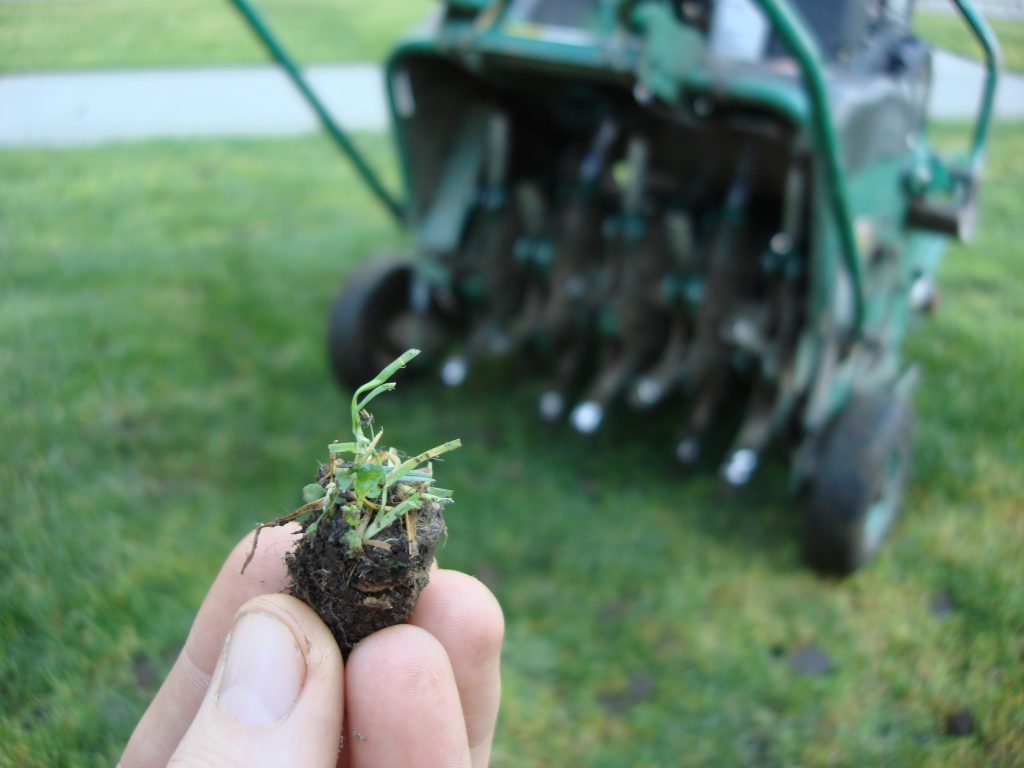If you want a vibrant, green lawn, you need to aerate it. Aeration is the process of punching small holes in your lawn to allow air, water, and nutrients to reach the roots. This encourages stronger growth and reduces compaction, making your lawn healthier and more beautiful.
In this guide, we’ll cover everything you need to know about how to aerate your lawn, including when to do it, why it’s important, and several different methods you can use.
What is Lawn Aeration?
Before we get started, let’s talk a bit more about what aeration is and why it’s necessary. Over time, your lawn can become compacted, meaning that the soil is too dense for air, water, and nutrients to penetrate deeply. This can lead to shallow roots, weak grass, and an overall unhealthy lawn.
Aeration helps to alleviate this problem by creating small holes in the soil, allowing air, water, and nutrients to reach the roots more easily. This encourages deeper root growth, stronger grass, and a healthier lawn.
When Should You Aerate Your Lawn?
The best time to aerate your lawn is during the growing season, which is typically in the spring or autumn. This is when your grass is actively growing and can recover more quickly from the aeration process. It’s also important to aerate when the soil is moist, so plan to do it after a rain or after watering your lawn the night before.
Important: Avoid aerating when the ground is too wet or too dry, as this can cause more damage to your grass.
Signs Your Lawn Needs Aeration
Not sure if your lawn needs aeration? Here are some signs to look out for:
- Your lawn feels spongy or soft to the touch
- Your lawn is showing signs of wear and tear, such as bare spots or compacted soil
- Your grass is thin, weak, or has shallow roots
- Your lawn has a lot of thatch (dead grass and other debris) built up on the surface
If you notice any of these signs, it’s time to aerate your lawn and take a look at Westland SafeLawn Liquid Lawn Feed, Westland Multi-Purpose Compost or Westland Lawn Sand to see if they can also provide a boost to your lawn.

The Different Methods for Aerating Your Lawn
There are several ways to aerate your lawn, each with its own unique benefits. From manual methods like spike aerators and garden forks to powered options like plug aerators and lawn mowers with aerator attachments, there’s a method to suit every lawn and every budget.
We’ll explore some of the most popular ways to aerate your lawn, so you can choose the method that works best for you.
Manual Aeration with a Garden Fork
If you have a small lawn or a tight budget, manual aeration with a garden fork is an effective and affordable option. This method involves poking holes in the soil using a garden fork, spacing the holes about 2-3 inches apart. To ensure the best results, push the fork as deeply as possible, at least 3-4 inches into the soil.
While this method can be time-consuming and physically demanding, it’s a good choice for those who have only a small area of grass to aerate or those who don’t want to invest in an aerator. Manual aeration also allows you to focus on problem areas or spots that get a lot of foot traffic, where soil compaction is most likely to occur.
One tip for manual aeration is to water the lawn thoroughly the day before to help soften the soil, making it easier to penetrate with the garden fork. You can also use a board or piece of plywood to spread your weight and reduce damage to the grass.
While it may not be the fastest or most efficient method, manual aeration with a garden fork can be a practical solution for those looking to aerate their lawn on a budget or with a small lawn.

Using a Hollow-Tine Aerator
Using a hollow-tine aerator is a more efficient and effective way to aerate your lawn compared to manual aeration. This tool removes small cores or plugs of soil from your lawn, leaving behind small holes for air, water, and nutrients to penetrate deeply into the soil.
Hollow-tine aerators come in different sizes and shapes, and you can rent them from most garden centers or home improvement stores. When using a hollow-tine aerator, it’s essential to follow the instructions carefully to ensure that you achieve the best results. You should also keep the aerator blades sharp to avoid tearing the grass and ensure that the cores are removed completely.
One advantage of using a hollow-tine aerator is that it can be used for larger lawns, which can be time-consuming to aerate manually. Additionally, the holes created by the hollow-tine aerator are usually deeper and wider than those created by manual aeration, allowing for better water and nutrient absorption, leading to healthier grass growth.

Using a Spike Aerator
Spike aerators are a popular and less expensive option compared to hollow-tine aerators. They are available in manual and powered versions, and can be found at most garden centres or home improvement stores. The spikes of the aerator penetrate the soil, creating holes that allow air, water, and nutrients to reach the roots of your grass. However, unlike hollow-tine aerators, spike aerators do not remove any soil from your lawn.
While spike aeration is less effective than hollow-tine aeration, it still provides some benefits to your lawn. It can help to relieve soil compaction and improve drainage, allowing your grass to grow stronger and healthier. Spike aeration can also be done more frequently than hollow-tine aeration, as it does not remove soil plugs that need time to decompose.
It’s important to note that spike aeration can actually worsen soil compaction if done too frequently or on already compacted soil. Therefore, it’s recommended to only use a spike aerator on smaller lawns or as an occasional alternative to hollow-tine aeration.
